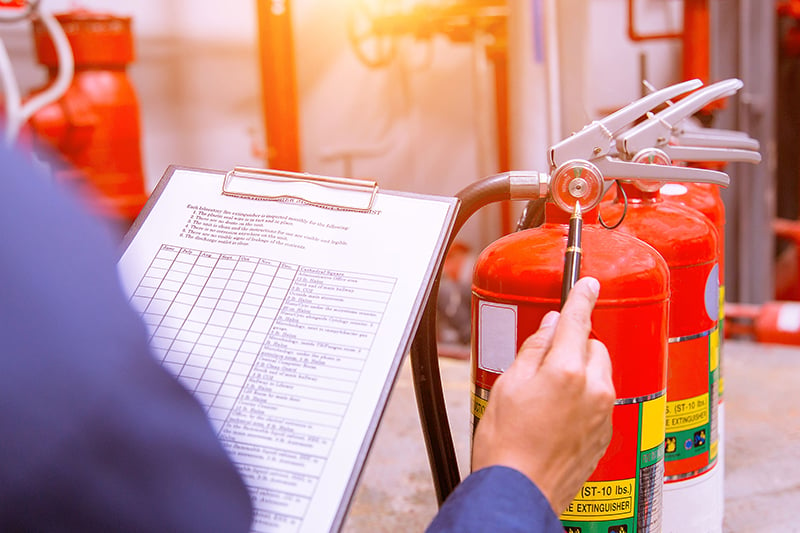Post Content
- What is a Fire Risk Assessment
- Why conducting a fire risk assessment is important?
- Who should conduct a risk assessment?
- Fire Risk Assessment Checklist Guide
- 2. Identifying People at Risk
- 3. Eliminating Fire Safety Risks
- 4. Documenting Risk Assessments
- Reviewing, Adapting, and Sharing
- Essential Points for Fire Risk Assessments
In the fire protection sector, having an organized workflow versus chaos can be crucial in effectively identifying hazards. Conducting a fire risk assessment is essential to ensure safety in case of a fire.
It’s important not to delay realizing the shortcomings of your fire risk assessment. Take control of your fire protection management now by following these five steps.
(Seeking the most effective method for fire safety risk assessment? Contact us now.)
What is a Fire Risk Assessment
A fire risk assessment is a legally mandated process designed to identify potential fire hazards, detail evacuation routes for emergency situations, and verify the availability of appropriate firefighting equipment. Conducting fire risk assessments is crucial for achieving asset compliance and safeguarding individuals from danger. It is recommended to maintain a written record of your findings, which should encompass your fire safety precautions.
Why conducting a fire risk assessment is important?
Conducting a fire risk assessment is crucial, whether you’re establishing a fire protection enterprise or aiming to enhance your existing operations. Such assessments are instrumental in implementing the appropriate proactive fire safety measures. They aid in the early detection of potential hazards, thereby mitigating the risk of fires and preventing damage.
Beyond its role in protecting the inhabitants of a building, a fire safety risk assessment is also a legal obligation. Ensuring that the assessor’s team meet all necessary criteria and execute their duties effectively.
Who should conduct a risk assessment?
The fire risk assessment should be carried out routinely or as dictated by the local fire regulations and standards of your building, by an individual designated as responsible.
It’s crucial to offer your technicians the necessary training to perform the fire risk assessment and update outdated methodologies with more sophisticated training techniques. Prior to conducting your forthcoming fire risk assessment, ensure the certified assessors like the LandlordSafetyCertificate team are well-informed and aligned with the help of a fire dispatching guide.
Fire Risk Assessment Checklist Guide
1. Identifying Fire Hazards
The initial step towards fire prevention involves pinpointing potential hazards like flammable materials and implementing significant modifications to eliminate any fire risks.
Frequent sources of fire or activities might encompass:
- Heating elements like water (Class A fire)
- Flammable chemicals or materials (Class B fire)
- Electrical malfunctions or apparatus (Class C fire)
- Flammable metals or metalworking (Class D fire)
Have you recently updated your fire safety documentation? Discover all you need to know.
2. Identifying People at Risk
In line with your guide for servicing fire equipment, the next step is to determine who is at risk. This usually includes:
- Employees within the building
- Contractors
- Cleaning staff
- Residents
- Security personnel
- Visitors
Ensuring appropriate measures are in place to reduce risks to these individuals with fire safety equipment, such as fire doors, smoke alarms, or accessibility ramps for those with disabilities, is crucial.
3. Eliminating Fire Safety Risks
The subsequent phase in your fire risk assessment involves implementing measures to eradicate the possibility of a fire. Within your field management duties, you’ll need to assess potential hazards and individuals at risk, and then formulate preventive actions.
For instance, this might involve questions such as:
- Are there clear signs indicating the location of fire doors?
- Are fire extinguishers readily available on the premises?
4. Documenting Risk Assessments
Having conducted your assessment, pinpointing risks and determining action steps, it’s crucial to document these findings. Ask yourself if the building necessitates continuous, regular upkeep or if there’s a shortfall in fire safety equipment.
This stage involves devising a strategy for your fire protection management, including the layout of any evacuation plans or signs to ensure they are easily identifiable by the building’s occupants.
Fed up with unreliable fire risk assessment report? Contact us and get your fire safety report in 24 hours.
Reviewing, Adapting, and Sharing
It’s now necessary to review your assessment, make adjustments based on any changes, and disseminate your findings with both your team and the building’s management. By aligning your field service metrics with your fire assessment, you’re able to keep tabs on the building’s condition, ensuring that your fire protection management is improving rather than deteriorating.
Essential Points for Fire Risk Assessments
Securing accuracy in your fire risk assessment is crucial for effective fire safety. The five main steps encompass:
- Identifying fire hazards
- Identifying people at risk
- Eliminating fire safety risks
- Documenting risk assessments
- Reviewing, adapting, and sharing
Avoid allowing a disorganised team, and get your FRA report with LandlordSafetyCertificate in 24 hours.


